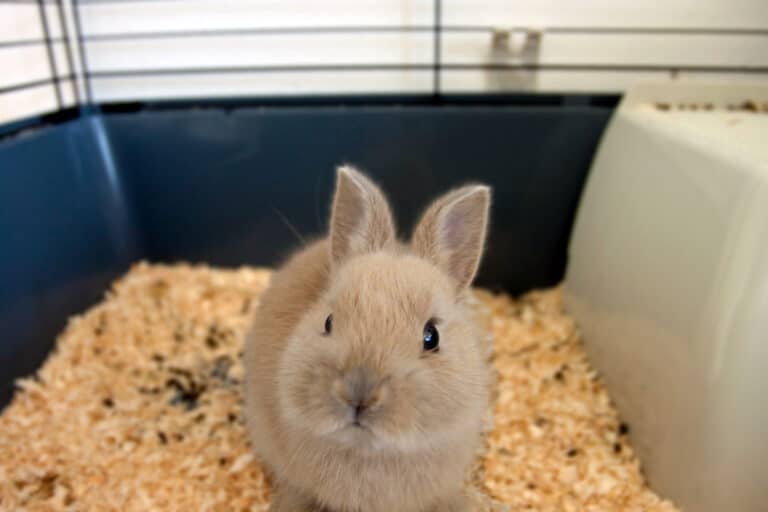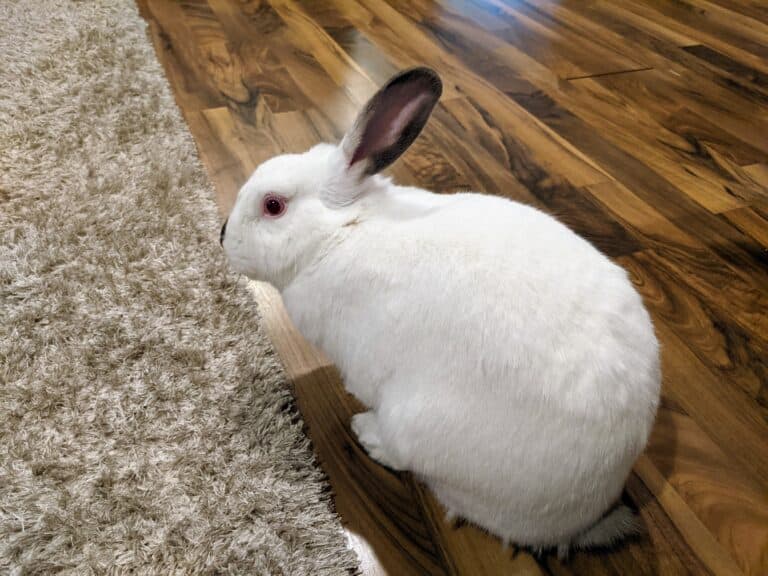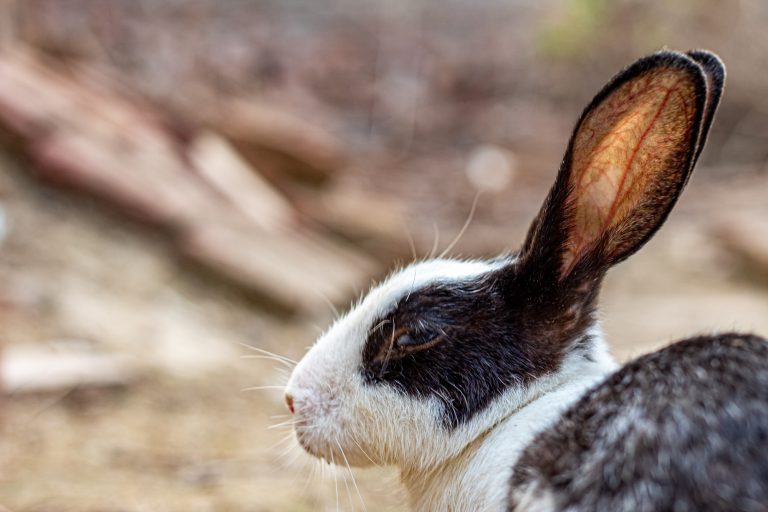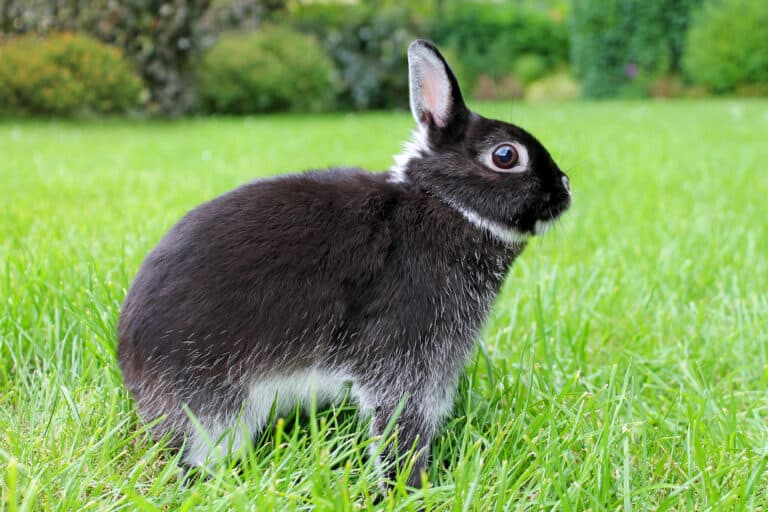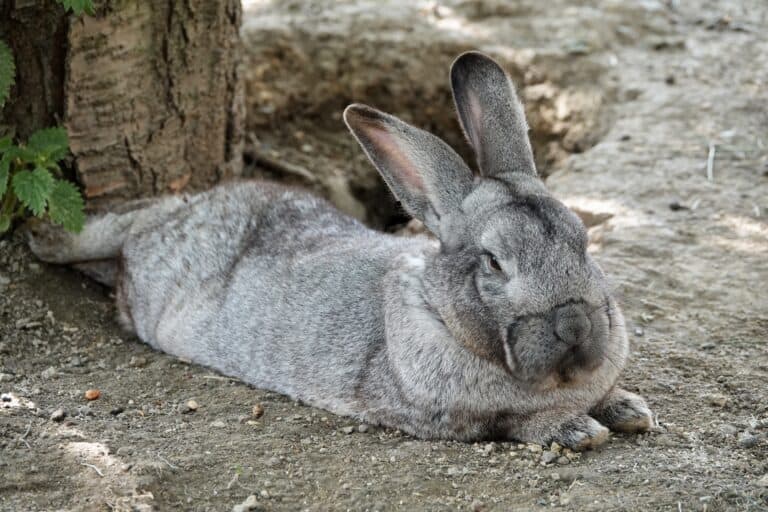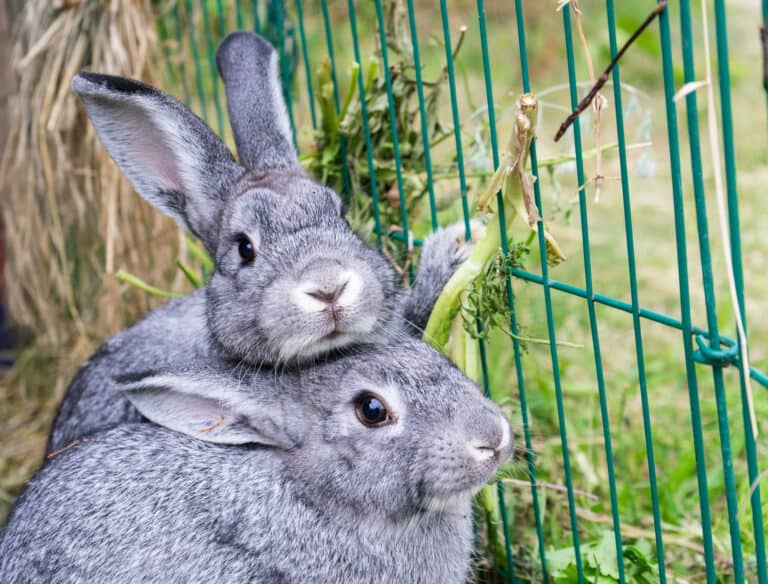How Big Do Holland Lop Rabbits Get? Complete Guide
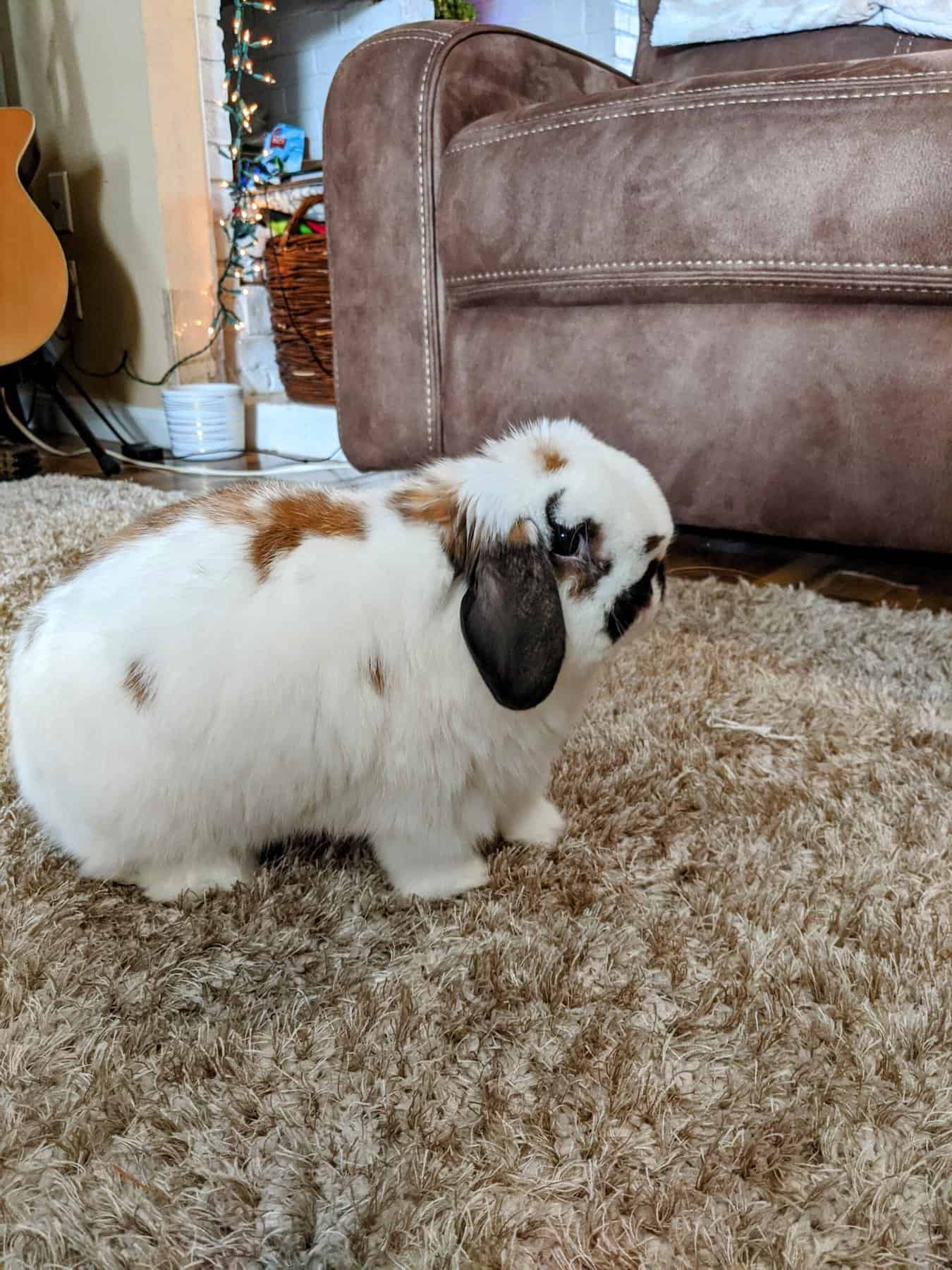
Does size matter when it comes to your choice of a pet rabbit? If you want one that’s so tiny, some can literally fit the palm of your hand, a Holland Lop bunny might just be for you. Holland Lops are one of the most popular rabbit breeds and one of the smallest. But how big do Holland Lop rabbits get anyway?
Let’s check out the size these irresistible furballs attain in adulthood and what makes them such great pets.
How Big Do Holland Rabbits Get? Key Take-Aways
This beloved dwarf lop breed is a perfect bundle of joy. The average weight of adult Holland Lops falls between 2 and 4 pounds, although most don’t hit that maximum weight, often staying on the lighter side of the scale.
Our Holland Lop, Easter, was about 3.5 pounds. (Find out more about him here).
As a small breed of rabbit, a full-grown Holland Lop stands at 4-5 inches, although some can reach 10-12 inches when they stretch. In most cases, male Holland Lops are smaller than their female counterparts.
What’s a Holland Lop Rabbit?
Holland Lop bunnies are often lovingly called the “teddy bear” of the rabbit world. They’re known not just for their size and endearing lop ears but also for their personality. Here are some interesting facts about these delightful furballs:
History of the Holland Lop
According to ARBA, the Holland Lop breed began in the Netherlands in the 1950s. They came from the efforts of bun breeder Adrian de Cock, who wanted to create a small rabbit with floppy ears.
Through some thoughtful crossbreeding, where he mixed a French Lop with a Netherland Dwarf rabbit and an English Lop, the first Holland Lop bunnies were born. These little lop-eared rabbits quickly became popular in Europe and later in the United States, where they received official recognition from the American Rabbit Breeders Association (ARBA) in 1979.
Today, they’re one of the most common rabbits around.
Physical Characteristics of Holland Lop Rabbits
Arguably one of the cutest breeds of rabbits, the Holland Lop may be small, but it boasts a compact and muscular body. It has a round face, broad head, and short, dense coat with a distinctive puff of fur around its neck.
What pushes its cuteness quotient over the top, though, are those adorable lop ears that start flopping over when the bun’s around 2 or 3 months old.
Holland Lops come in a variety of colors that include the following:
Personality
On top of this bun breed’s small size and adorable looks, it has a sweet personality to boot. Holland Lops are calm and sociable animals who love being with their owners. They don’t spook easily, making them good pets for almost everyone, including families with young children.
On the downside, because of their small size, they require gentle handling and special care to prevent injuries. Imagine if your tiny furball slips from your grip and takes a tumble to the ground, or your kid gives it an unexpected extra squeeze, and you’ll get what we mean.
From our experience, buns from the Holland Lop breed also tend to chew more than other rabbit types. If you get one of these cuties, stock up on plenty of chew toys to prevent your pet from chewing up the carpet, walls, and anything that catches its fancy.
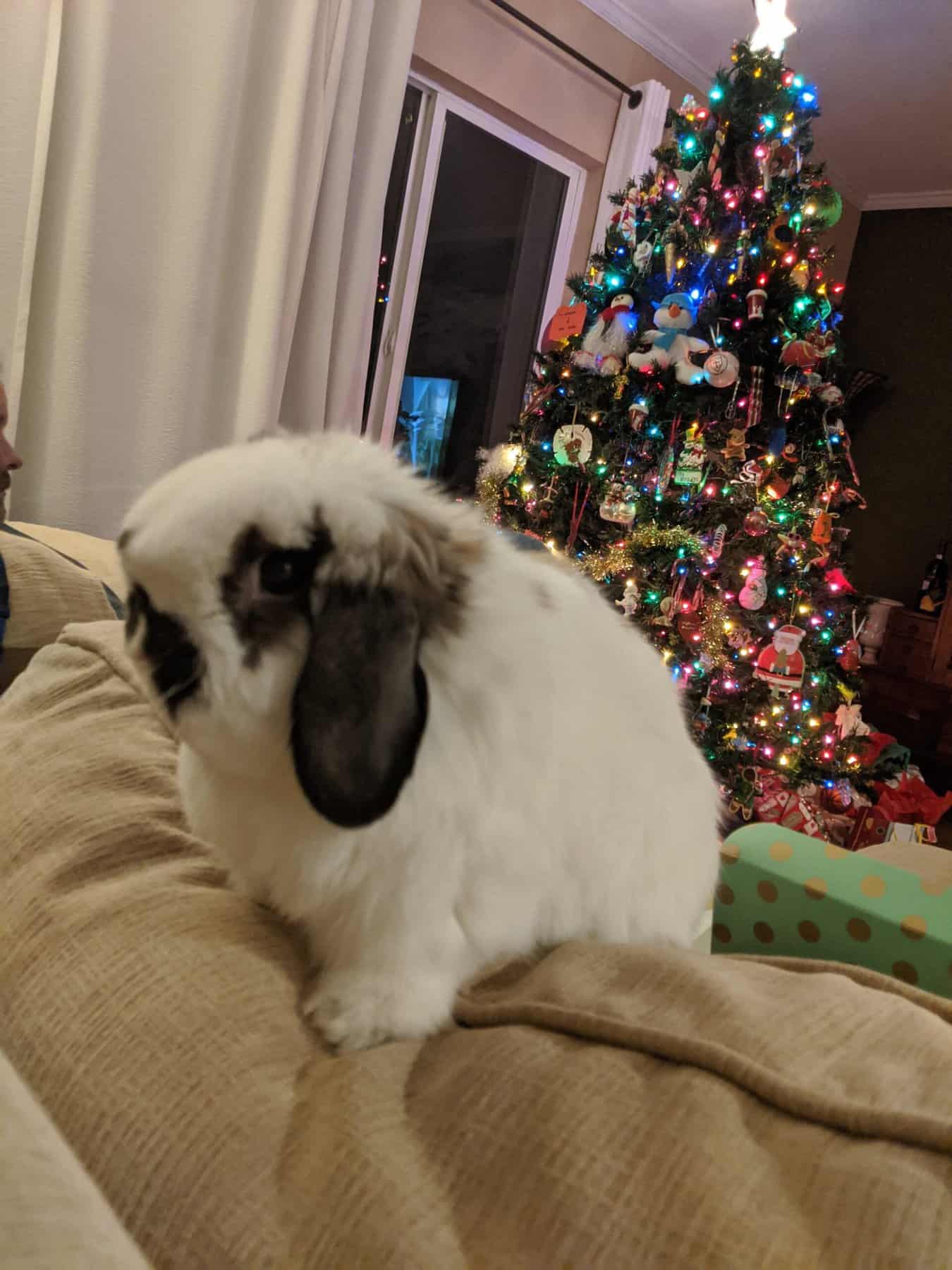
How Big Are Holland Lop Bunnies at Birth?
Holland Lop buns are teeny-weeny nuggets when they make their grand entrance into the world, usually weighing just 2 to 4 ounces. That’s as light as a deck of playing cards!
Like other bun types, they’re born blind, deaf, and without fur, but they start to get covered with fuzzy growth by their 10th day.
How Big Do Holland Rabbits Get Compared to Other Lop Rabbit Breeds?
To give you a clearer picture of how teensy Holland Lops are, let’s compare them with other Lop buns.
| Rabbit Breed | Weight | Height/Length |
| Mini Lop | 3-6 pounds (1.3-2.7 kgs.) | 10.16-12.7 cm. (4-5 inches) |
| American Fuzzy Lop | 3-4 pounds (1.3- 1.4 kgs.) | 30-40 cm. (11.8-15.7 inches) |
| English Lop | 9-10.5 pounds (4-4.7 kgs.) | 20.3-25.4 cm (7.9-10 inches) |
| French Lop | 11-20 pounds (4.9-9 kgs.) | 30-38 cm. (11.8-14.9 inches) |
| Miniature Lion Lop | 3.3–3.5 pounds (1.5–1.6 kgs.) | 30-40 cm. (11.8-15.7 inches) |
| Dwarf Lop | 3-4 pounds (1.3-1.8 kgs.) | 20.3-27.9 (8-11 inches) |
Factors That Affect How Big Holland Lop Rabbits Get
Holland Lop rabbits usually grow to a specific size, but not all buns from the breed will fit the mold. Several factors can tinker with how big your Holland Lop ends up. So, while we’ve given you a ballpark idea of their average size, a few factors can affect your fur baby’s adult dimensions.
Genetics
While Holland Lops are recognized as a small breed of rabbits, if your bunny’s parents happen to be on the larger side, your little cutie could exceed the typical breed size. So instead of tipping the scales at 4 pounds, he could weigh in at 8 pounds in adulthood, way heavier than the standard of perfection set for Holland Lops.
Diet
Ideally, a rabbit’s diet should consist of hay, supplemented by fresh vegetables, a small amount of pellets, and some treats.
If your Holland Lop has poor nutrition or consumes too much sugary stuff, he might end up being larger and heavier than the breed size. That’s why it’s a good idea to watch how much food you give your furry pal and ensure he’s getting all the right ingredients for a proper diet.
Exercise
Despite their compact size, Holland Lops need plenty of space to stretch their legs. Lack of exercise can cause your pet to pack on the pounds, particularly if you’re overly generous with his meal portions. Giving your bunny lots of playtime and plenty of exercise can help him stay in line with the breed’s size standards.

Health Problems Holland Lop Rabbits Face
Their compact size, adorable looks, and sweet personality make the Holland Lop an ideal family pet. Unfortunately, these little fuzzballs have their share of health conditions that make caring for them a bit of a challenge.
Ear Infections
Because of their floppy ears, lop-eared rabbit breeds are more prone to ear infections than other bun types. These rabbits have ears that are about 4-5 inches long and sit close to their faces. This makes it harder for air to circulate inside the ears, resulting in the accumulation of debris and moisture, which, in turn, can lead to wax build-up and ear infections.
Watch out for symptoms like ear swelling, constant scratching, head tilt, and loss of appetite.
Dental Diseases
The shape of their skull makes these little sweeties more susceptible to dental problems. You see, the lop gene makes the head rounder and shorter than non-lop-eared bun types.
This predisposes Holland Lops to dental problems because the teeth do not align properly and do not wear down evenly. The upper and lower incisors may become misaligned and overgrown, causing difficulty eating and mouth injuries.
Have your bun checked by your vet if he shows the following symptoms:
- Loss of appetite
- Dropping food
- Swelling along the jaw
- Abscesses inside the mouth
- Smaller poop or no poop at all
Tummy Problems
Health issues involving their digestion are common to most rabbits, no thanks to their extra-sensitive digestive system. Eating fruits and treats with high sugar content and not getting enough fiber in their diet are usually the culprits.
Feeding your bun hay (Timothy Hay is an excellent choice) and fresh veggies will go a long way in keeping his gut in tip-top shape. Don’t forget to provide plenty of fresh water and opportunities to exercise out of his cage.
Parasitic Infestations
Parasitic infestations can turn your Holland Lop’s life into a nightmare, causing problems for your furry friend. These common parasites could spell trouble for your bunny’s health.
- Encephalitozoon cuniculi: Also referred to as E. cuniculi, this teeny intracellular parasite can cause neurological issues and kidney damage to your bun. Its mode of transmission is through the ingestion or inhalation of spores found in the pee of an infected rabbit. Excessive thirst and urination, head tilt, cloudy eyes, and paralysis of the hind legs are the common symptoms of an E. cuniculi infestation.
- Cheyletiella parasitovorax: Also known as “walking dandruff,” this skin mite can make your Holland Lop itch like crazy. Being infested with these parasites can lead to flaky skin and hair loss in your bun.
- Ticks and fleas: We recommend using flea prevention on your rabbit as these pests are bloodsuckers. They’ll hook their mouth into your furball to get some blood and drop off once they have their fill. The bite can get infected or cause skin irritations. These parasites can also act as vectors for viruses that are sometimes fatal to rabbits. Myxomatosis is an example of a deadly disease that can be transmitted by biting insects like ticks and fleas.
A Holland Lop will remain as tiny as a baby bunny even in adulthood. So, if an itty-bitty companion is what you’re looking for, this little cutie could be the perfect match.
More on Rabbit Breeds
- How Big Do Holland Lop Rabbits Get? Complete Guide
- How Long Do Flemish Rabbits Live: Giant Breed Facts
- Are Rabbits Rodents? Find Out More About These Small Mammals
- How Long Do Holland Lop Rabbits Live?
- All About Bunnies with Red Eyes: Why and How They Get Red Eyes
We hope you enjoyed this post! If you did, will you give it a share or two 🙂 Thank you! ~from Every Bunny Welcome


